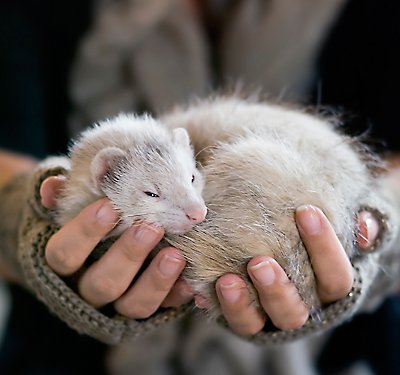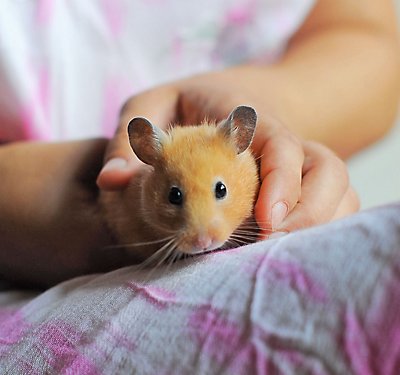
 top
top
SMALLPET / health & care
Hamster Care Guide
Overview
Are you considering becoming the proud pet parent of a hamster? Hamsters bring so much joy to your home, but they do require a good deal of responsibility and commitment. Before you decide to bring one home, you should learn how to take care of a hamster. Learn more about how to give your hamster the proper care.
7 things to know about your Syrian Dwarf hamster
Before you decide to bring home a hamster, here are some general things you should know about them:
- They can live up to 2 years
- Syrian hamsters like to live alone
- They’re nocturnal (active at night)
- They’re omnivores
- They like to forage and burrow in their habitat
- They are very active and require plenty of floor space in their habitat to run around
- They have cheek pouches to store their food when they’re on the run
How do I set up my hamster’s home?
The first day you bring home your new hamster, make sure it’s a pleasant, calm homecoming. You’ll also want to stock up on small pet products so you can be prepared when you bring them home. Have a water bottle and a food bowl (heavy enough not to be tipped over) waiting for your new arrival. Fill the habitat with treats and toys (a wheel or tunnels for exercise and chew toys) to make it a happy hamster home.
Choose a large habitat with a solid bottom and a well-ventilated top. Be sure to check and make sure it’s escape-proof! Line the habitat with at least 2-3 inches of hamster bedding or recycled-paper. Sprinkle in a few shavings from your hamster’s old habitat and your new friend will feel at home right away. Make sure your hamster’s food isn’t in the same place as the bed.
What do hamsters eat?
Your hamster’s diet should be made up of pelleted food, vegetables, fruits, and a few treats here and there. Vegetables are given daily, but removed after four hours so they do not break down in the cage. Fruits and treats should be given twice a week and also removed after four hours if not eaten.
How much should my hamster eat?
Now that you have a good idea of what types of foods your hamster likes to eat, how much of each food should they have?
- Pelleted Food - 80% of their food or ¾ of their bowl, refreshed daily
- Vegetables - 15% of their food, including leafy greens every day
- Fruits - 5% of their food twice a week. This might include options like oranges or blueberries
- Treats - 5% of their food can be grasses/hay
- Water - A water bottle and/or bowl of fresh, clean water should be available at all times and refreshed daily
How can I play with my hamster?
Hamsters love their cardio; be sure to provide an exercise wheel and lots of space in the habitat for your hamster. If your hamster is comfortable being handled, you can gently hold them, supporting their body with two hands underneath. They may even crawl on you. Otherwise, provide them with toys that they can entertain themselves with.
How do I groom my hamster?
In short, you don’t - your furry friend has it covered. Hamsters engage in an elaborate, and often adorable, cleaning ritual, washing their faces and cleaning out their ears with their feet. No need to help them— they’ve got it covered.
How can I keep my hamster healthy?
Taking care of a hamster may require some extra time and patience, but overall, it’s pretty simple. Give them proper nutrition and keep them hydrated, make sure they have a way to exercise and entertain themselves and give them a clean, cozy place to call home.
You may also need to bring your hamster to the vet from time to time. You should look for a vet who is experienced with small pets. When you first bring them home, make an appointment with a veterinarian for an initial checkup just to make sure they are healthy and have been well taken care of in the past. After that, you’ll need to bring them back for an annual checkup. If you notice any concerning symptoms or behaviors in your hamster, contact your vet.
Take your hamster for a check-up if they display any of these signs:
- Cloudy, sunken or swollen eyes
- Wheezing
- Sneezing; discharge from the eyes, nose or mouth
- Overgrown front teeth
- Bare patches in the fur
- Sores on the feet
- Weight loss; not eating or drinking normally
- Diarrhea or discolored droppings
Now that you know how to take care of a hamster, go enjoy that little furball!
PET SAFETY TIPS
- ALL ANIMALS can potentially carry viral, bacterial, fungal, and parasitic diseases contagious to humans
- Thoroughly wash your hands with warm, soapy water before and after contact with any pet or its habitat
- Adults should assist children with handwashing after contact with a pet, its habitat or water
- Use caution when handling pets and remember they may bite or scratch (especially when stressed)
- Never grab their fur or tail
Information in this article is not intended to diagnose, treat or cure your pet and is not a substitute for veterinary care provided by a licensed veterinarian. For any medical or health-related advice concerning the care and treatment of your pet, contact your veterinarian.


























